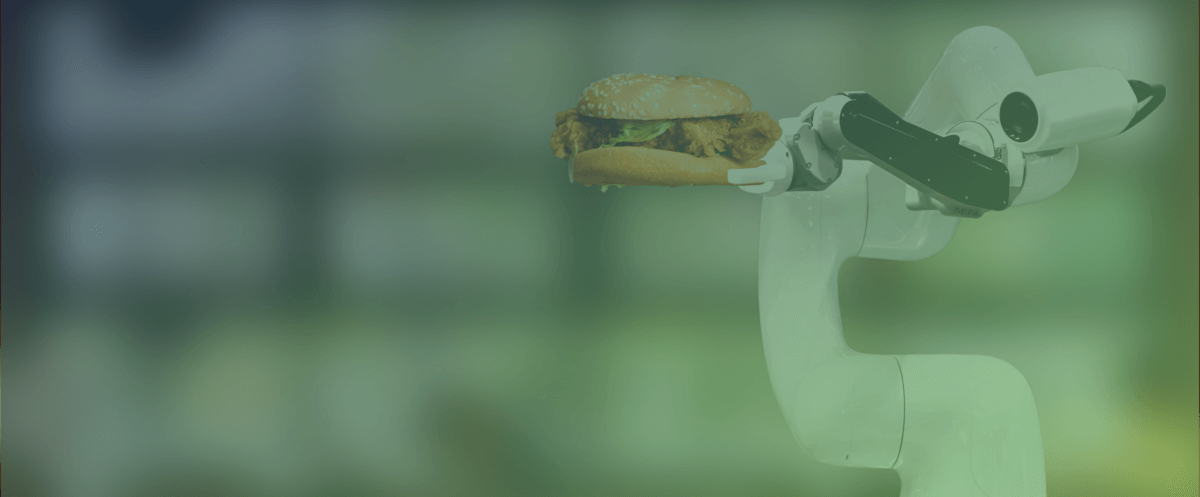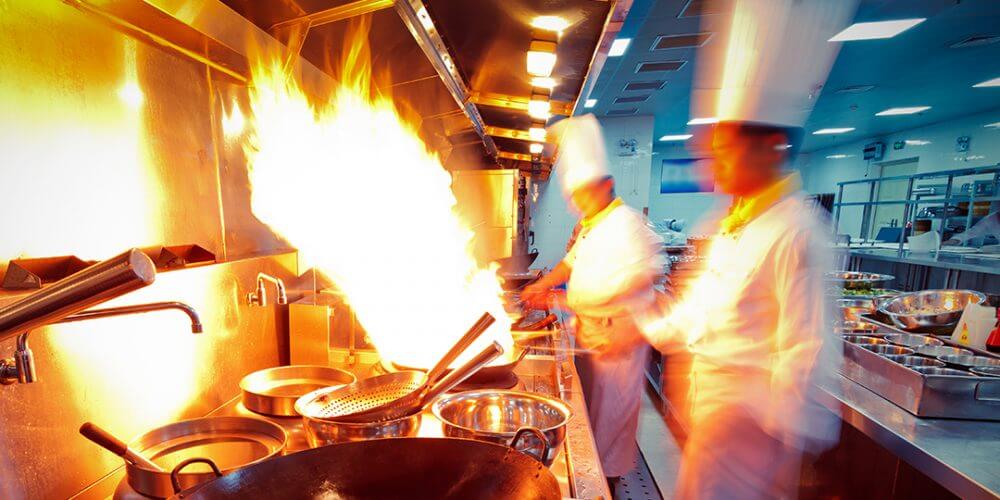With science fiction becoming a lot less fictional with every passing year, it might not be long before you start to see robots in every industry. The retail and hospitality industry has started to embrace its own wave of robots — with these robots taking on various shapes and sizes to try and boost efficiency, lower costs, and ultimately improve the client experience. But, as futuristic and Jetsons-like it seems, will robots be able to replace the hospitality and human connection everyone has come to expect? These automated servers, robotic chefs, and mechanical expos have sparked debate around the restaurant world. Let’s take a look at what types of restaurant robots you might encounter (or incorporate) and explore if robots in restaurants are just a passing fad or a key to revolutionizing the dining experience of the future.
Types Restaurant Robots
There are various robots that are currently being utilized or actively developed for use in the restaurant industry. Companies such as Pudu Robotics, Truebird, Bear Robotics, and Miso Robotics, are just a handful of manufacturers paving the path for restaurant robots. Usually designed to perform specific tasks and functions, these robots take on many different roles in an effort to boost profitability and efficiency:
Robotic Servers
Designed to take on the role of human servers; these robot servers can navigate through the restaurant following designated paths, deliver food and drinks using trays or built-in compartments, and interact with customers by responding to their requests (usually through some form of touch screen.)
Robotic Chefs & Cooks
These robots are programmed with culinary capabilities to perform various cooking tasks such as food preparation (chopping, mixing, etc.) along with programming to replicate dishes.
Automated Food Delivery Robots
Delivery robots are designed to transport food orders from the kitchen to tables or designated pick-up locations. These robots can be equipped with sensors or heat lamps to ensure food remains fresh and at the correct temperature during transport.
Beverage Dispensing Robots
Robots such as beverage dispensing robots specialize in preparing and serving beverages such as cocktails, coffee, or soft drinks, while also offering customers the ability to customize their selection and sometimes even offering recommendations. While preparing beverages, they can precisely measure and mix ingredients, ensuring consistent usage, taste, and quality.
Robotic Kitchen Assistants
These robots assist in the kitchen by performing repetitive or labor-intensive tasks, such as dishwashing, cleaning, and food preparation. They can handle cleaning duties efficiently, ensuring a hygienic and sanitized environment. Robotic kitchen assistants can also help with ingredient measurement, sorting, and storage, reducing the workload for human chefs and kitchen staff.
Ordering and Payment Robots
These robots are stationed at tables or designated areas to facilitate ordering and payment processes. Customers can interact with these robots to browse menus, place orders, and make payments. These robots often have touchscreens or voice recognition systems to provide a user-friendly experience.
Robot Concierges or Robot Greeters
Some restaurants employ robots to welcome and guide customers upon arrival. These robots provide information about seating arrangements, wait times, and menu options. They can also offer recommendations based on customer preferences, making the dining experience more personalized.
The Debate of Robots in Restaurants
With so many types of robots for restaurants that are aiming to revolutionize the dining experience, there is still a lot to ask about the advantages and disadvantages they provide. As many see them as a fad or a glimpse into the future, many restaurants are using robots in parallel to their main (human) staff, allowing them to work together to maximize efforts.
One of the primary advantages of incorporating robots into restaurants is their ability to operate and perform tasks with precision and efficiency, reducing human errors, streamlining operations, and providing a consistent experience to customers. Unlike humans, these machines can work uninterrupted — opening the door to faster service and minimal delays during peak hours.
Another benefit is that within a post-pandemic world, hygiene and safety have become paramount. By utilizing robots, businesses can minimize direct human contact in the food service process and program robots to adhere to strict health and safety protocols.
On the other side of the fence, however, there are concerns being raised. The concept of widespread adoption of food industry robots has raised concerns around job displacement — as robots can efficiently handle tasks traditionally performed by human staff, causing social and economic implications that could possibly lead to unemployment rates and income equality.
The lack of personality and human integration is a disadvantage too for restaurant-automated robots. Although they offer accuracy and efficiency, they lack the emotional intelligence, empathy, and interaction that humans can provide. Many customers want an experience where they can interact with others and appreciate the warmth, empathy, and personalized service and connections that humans offer, which is an essential part of the dining experience.
Integrating robots into a restaurant requires significant investment in terms of technology, infrastructure, and maintenance. The cost of purchasing, programming, and maintaining robots can be prohibitive for small or independent businesses. Regular maintenance and repairs may also disrupt normal operations and incur additional expenses, potentially affecting a restaurant’s profitability.
You Decide
We’ve started to have a glimpse into more restaurants utilizing robots and have seen some streamline their processes by automating tasks to save in various ways. As time goes on, it is likely that we will see more experimentation with robots in restaurants — striking a balance between technological advancements and the human touch that allow dining experiences to thrive and be memorable for not only customers but the staff behind the scenes. Only time will tell if robots in restaurants a fad or a transformative force are just that shapes the industry into the future.
But restaurant technology doesn’t start with robots. Restaurant owners and operators can explore innovative solutions for their back office by using Decision Logic. Schedule a free demo with us today and see how you can save time, money, and sanity (without a robot rolling around the restaurant.)




